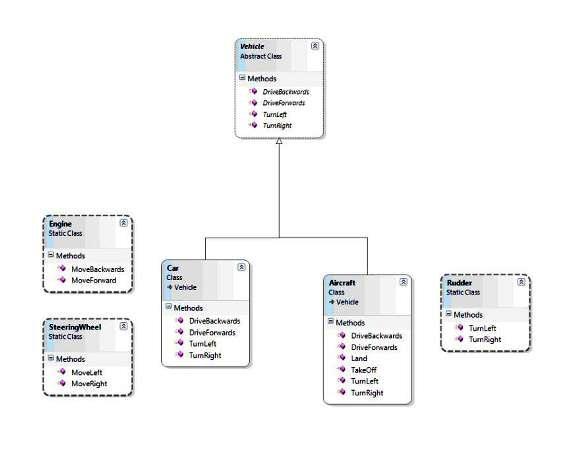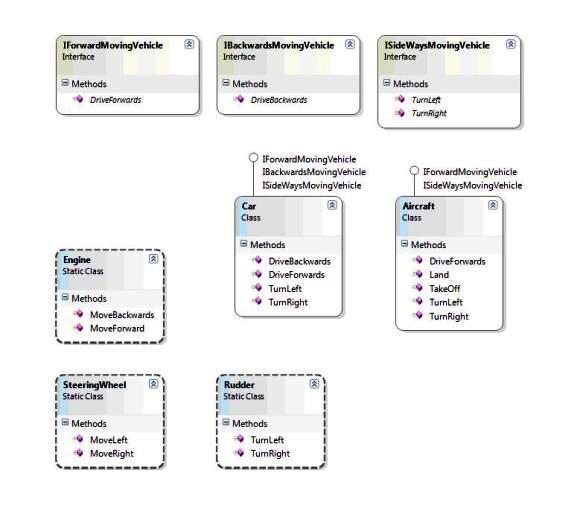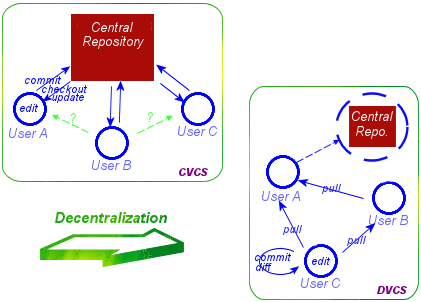CSC/ECE 517 Fall 2010/chd 6d isb
Introduction
The Interface Segregation Principle (ISP) focuses on the cohesiveness of interfaces with respect to the clients that use them. ISP is very similar to high cohesion principle of GRASP. ISP helps developers to change, refactor and redeploy their code easily. This principle alleviates the disadvantages of "fat" or "polluted" interfaces. [1] ISP is considered as the eye of the SOLID design principle. Two main ISP guidelines are: Classes should not be forced to depend on methods that they do not use, and the dependency of one class to another one should depend on the smallest possible interface. [3]
Brief Introduction to Interfaces in OOP
Interface separates the implementation and defines the structure, and this concept is very useful in cases where you need the implementation to be interchangeable. Apart from that an interface is very useful when the implementation changes frequently. Interface can be used to define a generic template and then one or more abstract classes to define partial implementations of the interface. Generally, interfaces are used as a group of related methods with empty bodies. Interfaces form a contract between the class and the outside world, and this contract is enforced at build time by the compiler. Interfaces are widely used in Object Oriented Languages such as Java, C# and C++.
Fat Interfaces
As stated above, ISP is used to overcome the problems introduced by "fat interfaces". In order to clarify this term, consider the example given below.

Cars, Motorcycles and/or Aircrafts classes implements the Abstract Vehicle interface that defines methods like: TurnLeft, TurnRight, DriveForwards and DriveBackwards. All these methods are going to be used by the classes which implements this interface. There will not be any problems if Cars class implements this interface, since every car turns left, turns right, drives forwards and drive backwards. Assume that Aircraft class also implements Vehicle Interface. Any aircraft can turn left, turn right and drive forwards. On the other hand, no aircraft can drive backwards by itself. Another example: if Motorcycle class implements Vehicle abstract interface, it has to use DriveBackwards method, although it cannot drive backwards by itself. Here, The Abstract Vehicle Interface is an example of a "fat interface". One of the side-effects of fat interfaces is that any class that implements the interface ends up doing too many things and this can clearly violate the [ http://en.wikipedia.org/wiki/Single_responsibility_principle Single Responsibility Principle].
ISP for " Fat Interfaces"
By breaking interfaces down into smaller chunks, we potentially reduce the responsibilities of a class and thus provide higher cohesion between the methods of a particular interface. This also provides the benefit of making a clear statement to consumers of the interface of what minimum functionality is required to be implemented: everything. There uncertainty of whether a particular method or property needs to be implemented vanishes, reducing the factor of surprise. The Vehicle interface could be decomposed into ForwardMovingVehicle and BackwardMovingVehicle. If there are classes that require both functionalities, they would implement both interfaces. Alternatively, if only one interface were required, for example for Aircraft, then only the ForwardMovingVehicle interface would be implemented, avoiding giving way to empty declarations with NotImplementedException exceptions as their implementation. If we apply ISP to the above example, new "thin" interfaces would be like below.

Concurrent Version System
CVS was originally created by Dick Grune of VU University of Amsterdam between 1984 and 1985 and was open sourced in 1986. However the code that eventually evolved into the widely used CVS was started by Brian Berliner in early 1989. By late 1990, with help from several others, the first edition was up for distribution. [9]
CVS , while using RCS underneath, is a lot more powerful tool and can control a complete source code tree. It can be greatly customized with scripting languages like PERL, Korn and bash shells. [10]
CVS offers the following significant advantages over RCS:
- It can run scripts which log CVS operations or enforce site-specific polices.
- CVS enables developers from different geographical location to function as a single team. Information is stored on a single central server and the client machines have a copy of all the files. The client- server connection must be up to perform CVS operations but need not be up to edit or manipulate the current versions of the files.
- It can merge changes from non-CVS vendor branches.
- Allows more than one developer to work on the same file at the same time
- CVS servers run on most OS including unix-variants, Windows and OS/2 etc
Subversion
In early 2000 work began on Subversion by Karl Fogel, the author of Open Source Development with CVS (Coriolis, 1999) and his friend Jim Blandy with the backing of CollabNet, Inc. And by late 2001, it started being deployed. [11]
Subversion is the next-in-line of version control system. CVS has a number of problems, primarily caused by its dependency on the RCS file format for versioning files. These and other issues addressed by Subversion include the following [12] [13] [14] [15]:
- In CVS, atomicity is not guaranteed. Subversion ensures atomicity.
- CVS has no way to rename files and save versioning history. In Subversion, the common history of file1 and file2 is conserved. Additionally, Subversion can be used for versioning a lot of different things. Directories and file metadata, as well as renamed or copied files, all have their own versioning.
- In CVS, branching and tagging are expensive operations for big repositories and directory trees, which have a cost proportional to the number of files being branched or tagged. Subversion has made both branching and tagging constant time operations. They are implemented simply by copying the directory being tagged.
- CVS is not binary file friendly. Any change to a binary file results in the replacement of the old file. Subversion uses a different approach to provide efficient binary diffing which means it can store pdfs and other binary files efficiently.
- If we change a file locally using CVS, and we want to know the difference, then the entire file has to be sent to the server. When we change a file using Subversion repository, a copy of the latest repository revision is made locally. The differences are sent in both directions, which mean a lot less use of bandwidth.
Distributed Revision Control
The first truly distributed version control system was the BitKeeper, which was developed by Linus Torvalds in December 1999. Distributed revision control (DVCS) is a fairly new concept in revision control. With it's peer-to-peer approach, each peer's copy of the code base is a bona-fide repository. It synchronizes by exchanging patches between peers. It's advantages over centralized revision control include [16][17]:
- By default, only the working copy of the code base exist.
- Since, communication with a central server is not required, common operations are much more faster. Peers need to communicate only when pushing or pulling changes with other peers.
- Each working copy exists as a remote backup of the code base.
Open systems are the most recent phenomenon in distributed revision control. They are characterized by their support for independent branches, and heavy reliance on merge operations. It is generally characterized by the following features -
- Peers are free to join as and when they wish without going through any elaborate approval process
- Each working copy works like a branch
- Selective changes can be "cherry-picked", pulling them from specific peers.
One of the first closed source DVCS was the Sun WorkShop TeamWare which was widely used in enterprise settings.[18]

Bazaar is one of the most famous open distributed style tree versioning tool. In addition to Bazaar (Mar,2005), many other distributed version control software are available. They include: Darcs (Nov, 2004), Monotone(Apr, 2003), Mercurial(Apr, 2005), Git(Apr, 2005).
Comparison of version control systems can be found here.
Summary
The Interface Segregation Principle is very simple at heart and although it states something that would seem somewhat obvious, it is many times ignored. By abiding to ISP, we can improve the quality of our code by making sure that we not only comply with the exact requirements of an interface by implementing everything defined in the contract, but we also aim for reducing the responsibilities of a class by minimizing an interface, and thus complying with the Single Responsibility Principle.
References
[1] The Interface Segregation Principle, Engineering Notebook for C++, 1996.
[2] Interface Segregation Principle, Retrieved April, 2010.
[3] Interface Segregation Principle, Ravij Narula, 2010.
[4] What is an Interface? The Java Tutorials by Oracle, 2010. [5] SVN vs CVS, 2005. Retrieved September, 2010.
[6] Neary, David, Subversion Building a better CVS.Linux Magazine, (30), 59-63.
[7] Amitash, Difference between CVS and Subversion. Retrieved September, 2010.
[8] Apache Subversion, 2010. Retrieved September, 2010.
[9] Revision control, 2010. Retrieved September, 2010.
[10] Distributed revision control, 2010. Retrieved September, 2010.
[11] Auvray S., Distributed Version Control Systems: A Not-So-Quick Guide Through, May 07, 2010